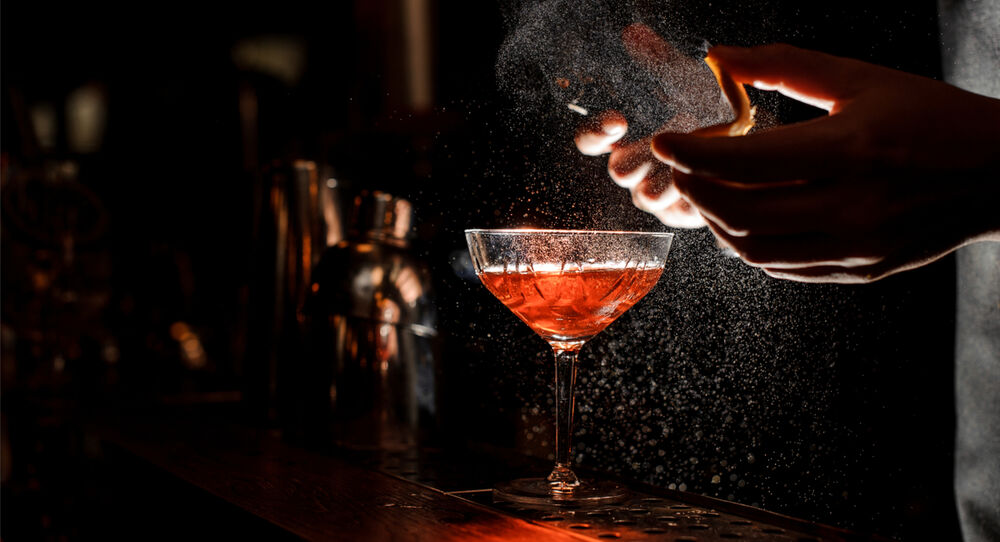The cocktail revolution has been going on for some time and one that has attracted millions of consumers. With this has come profitability for bars, increased sales of spirits and liqueurs have offered up opportunities for establishments to add glamour to their drink menus.
More sophisticated tastes have given us a new generation of bar staff. Their product knowledge, skill and ingenuity in blending flavours and devising the perfect serve have undeniably influenced drinking habits, with many consumers in favour of more exotic spirit-based beverages such as mojitos, margaritas and martinis.
It's no surprise then that spirits and liqueurs have enjoyed a revival over the last few years with nearly 9 million consumers preferring to drink cocktails when out. This 10% increase since 2016 has been helped along by an incredible summer heatwave last year and the upsurge in the social media activity around cocktails. [1]
Research by the Wine and Spirit Trade Association (WSTA) showed an upsurge in popularity of herbal gins, orangey Aperol and the bitter classic Campari, drinks which all contributed to a summer drinking boom. Served in pretty glasses and paired with the current glut of premium mixers or sparkling wine, their vibrant colours have proved to be very “Instagrammable.”
Almost 74% of UK bars now serve cocktails across the UK and customers, thrilled by the theatre of a perfect serve, have been influenced into recreating drinks at home so they can enjoy drinking away from the hustle and bustle of pubs and bars. [2]
As exciting as the cocktail market growth is, fashion is a fickle beast and social media influencers aren’t going to be satisfied with just the odd Hendricks and Fever Tree with a swirl of cucumber. So, what other cocktail trends are going to emerge?
The hospitality industry can now take advantage of quality pre-mixed cocktails. Bottle Proof supplies a range of classic and bespoke cocktails exclusively to the on-trade including hotels, theatres, restaurants and events venues across the UK and overseas. Their products are perfectly mixed and can cut out the need for a highly skilled staff. With a range of twelve classics including Elderflower Collins, Mojito and Long Island Iced Tea, Bottle Proof seem to have the staples covered, but what are the future trends for serves and styles?
Get carving
Texture is fast becoming a way of making a cocktail feel substantial and a multi-sensory experience. One way of doing this, aside from adding fruit, is by using ice in different ways. Large hand carved or branded blocks can minimise dilution, medium cubes are all purpose, whereas crushed, shaved or nugget ice can be used in tiki-styled drinks. Blended or smoothie cocktails continue to grow in popularity and texture can also be altered by using egg whites for a foamy or soft sensation in citrusy cocktails.
Drink your greens
With the rise of mindful drinking the "healthification" of drinks has shown no signs of stopping with the incorporation of cucumber, celery, fresh mint, peppers, cardamom seeds and capers into their serves to adds fresh, bright flavours and vibrant colours. But it’s not simply a case of making cocktails healthier, there are many products with vegetal characteristics such as Gin, Chartreuse or Aquavit.
Bittersweet
Bitters are being used to tone down drinks that are too acidic or sweet. Aperol, for example, adds bitterness, and also a great colour and Cynar is a bittersweet liqueur known for its versatility and distinctive flavour; its taste enriched by an infusion of 13 herbs and plants. Angostura bitters is also returning to the forefront as a major ingredient in cocktails.
Wine as a mixer
When used in cocktails, wines reduce the need to add lots of spirit and can add a softer sweetness. Bar staff could try ports, sherries and vermouths for sweetness and sparkling wines for bubbles. Red wine, usually used for sangria can also be used to create colourful, flavour-full cocktails.
Barista bartender
Coffee and tea as cocktail ingredients are being used for their smooth, earthy and smoky notes. While cold coffee delivers an obvious big flavour, teas offer versatility. These range from the subtle smokiness of lapsang souchong, roasty green teas and diverse flavours extracted from herbal and floral teas including hibiscus or chamomile. [3]
[1] CGA Mixed Drinks Report, April 2018
[2] https://www.theguardian.com/business/2018/dec/24/liqueur-sales-boom-social-media-cocktail-craze


